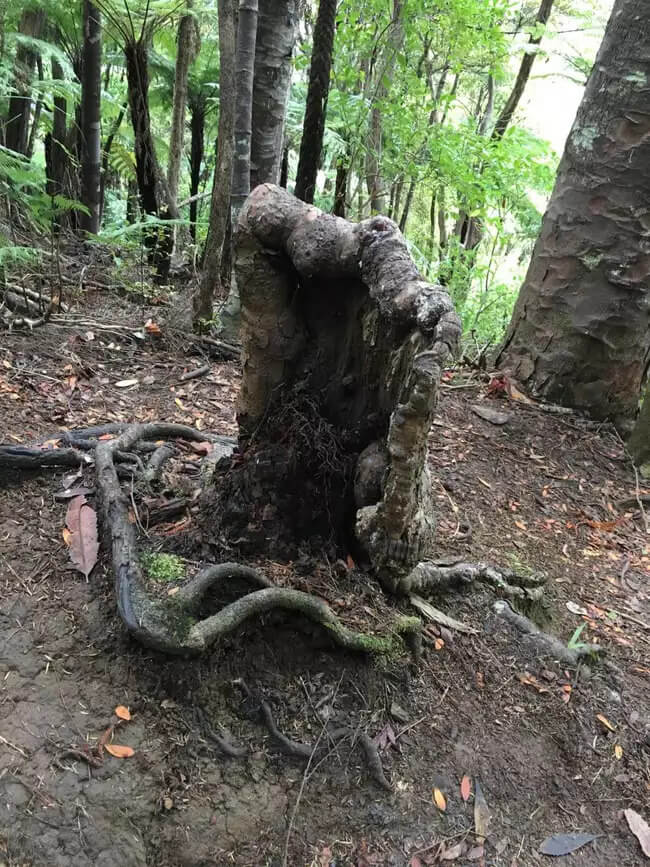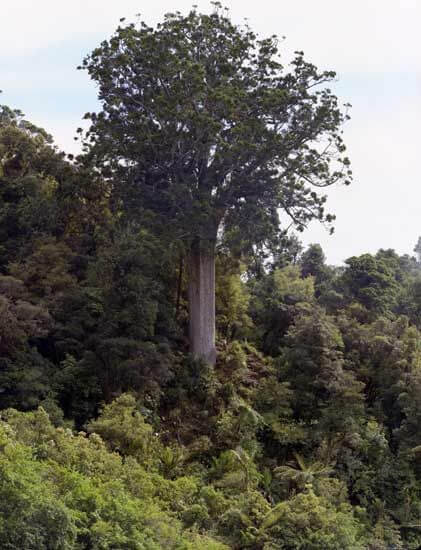Scientists Discovered Tree Stump That Survives Without Leaves And Branches In New Zealand
The stump of a kauri tree should have been dead, yet it still lives, and has been found in a forest in New Zealand. It seems to have survived by feeding on resources from nearby trees, holding onto and drawing out water from their roots.
The tree stump was stumbled across by Sebastian Leuzinger and Martin Bader from the Auckland University of Technology, who planned to examine the surrounding trees to discover how the stump remained alive.
Leuzinger said the find took them aback: "A tight water coupling between trees and living stumps (and presumably between intact trees) is a new finding that challenges our view on trees as individuals."
Leuzinger revealed, "As for kauri, reports are anecdotal. No forester nor New Zealand ecologist could direct us to a specific place where such leafless stumps exist. We only found one single living stump so far."
Nonetheless, the physiological implications are not truly recognized: "If other species show such tight hydraulic coupling, the theory on tree water supply, tree mortality under drought, and forest mortality need to be completely revised."
Potentially, Leuzinger and Bader argue, the discovery could mean trees do not operate as single entities, but that forests are "superorganisms"—a group that interacts synergically, operating as an organic whole. "The idea of superorganism arises when we imagine all trees of the same species in a forest are connected underground," Leuzinger said.
"That this is the case for carbon that is exchanged via mycorrhizae [through the roots] is already known. If, as our study suggests, this is also true for the exchange of water, we have to rethink the definition of 'tree' and 'forest.' Potentially we'll have to look at them a bit like huge insect colonies, that only exist as the entirety of all individuals—an entirely new concept of forests."
The tree stump was stumbled across by Sebastian Leuzinger and Martin Bader from the Auckland University of Technology, who planned to examine the surrounding trees to discover how the stump remained alive.
 Source: Sebastian Leuzinger
Source: Sebastian Leuzinger
Leuzinger said the find took them aback: "A tight water coupling between trees and living stumps (and presumably between intact trees) is a new finding that challenges our view on trees as individuals."
 Source: Sebastian Leuzinger
Source: Sebastian Leuzinger
Leuzinger revealed, "As for kauri, reports are anecdotal. No forester nor New Zealand ecologist could direct us to a specific place where such leafless stumps exist. We only found one single living stump so far."
 Source: Sebastian Leuzinger
Source: Sebastian Leuzinger
Nonetheless, the physiological implications are not truly recognized: "If other species show such tight hydraulic coupling, the theory on tree water supply, tree mortality under drought, and forest mortality need to be completely revised."
 Source: Sebastian Leuzinger
Source: Sebastian Leuzinger
Potentially, Leuzinger and Bader argue, the discovery could mean trees do not operate as single entities, but that forests are "superorganisms"—a group that interacts synergically, operating as an organic whole. "The idea of superorganism arises when we imagine all trees of the same species in a forest are connected underground," Leuzinger said.
"That this is the case for carbon that is exchanged via mycorrhizae [through the roots] is already known. If, as our study suggests, this is also true for the exchange of water, we have to rethink the definition of 'tree' and 'forest.' Potentially we'll have to look at them a bit like huge insect colonies, that only exist as the entirety of all individuals—an entirely new concept of forests."
Share this article
Advertisement